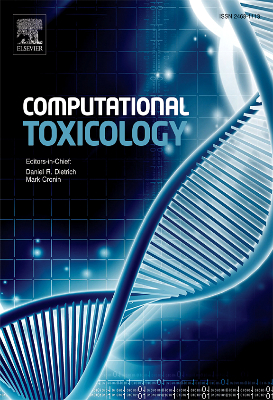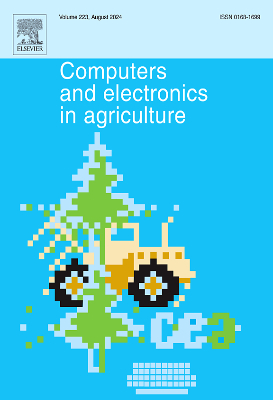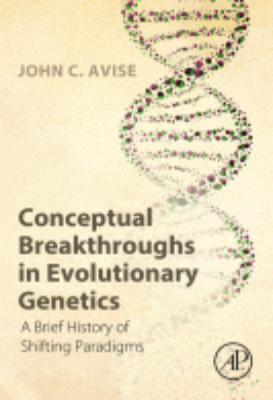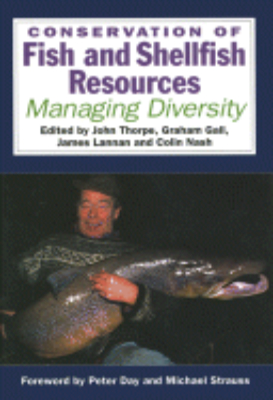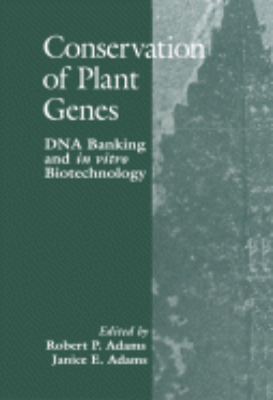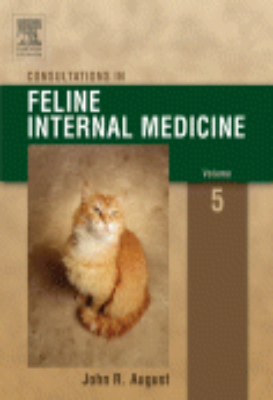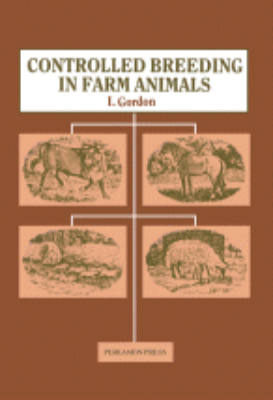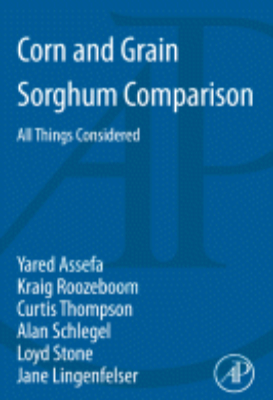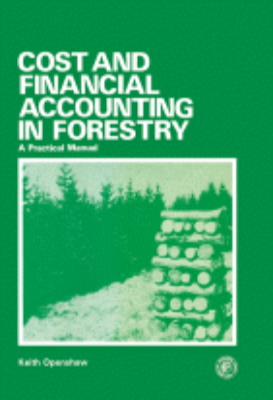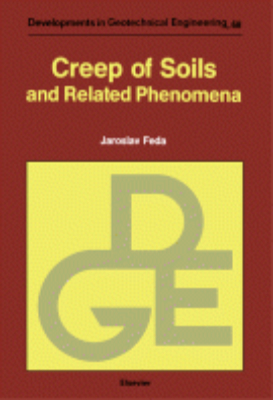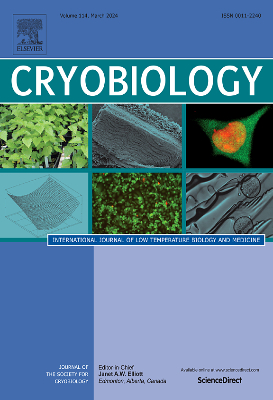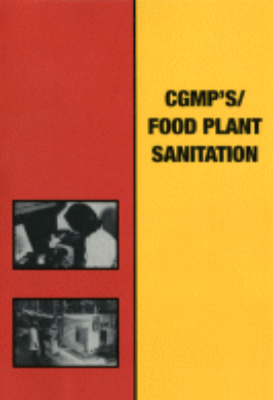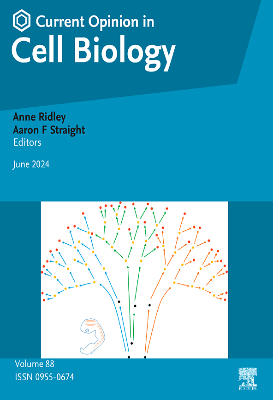E-Resources
Comparative Biochemistry: Volume 5 1963
Comparative Biochemistry: A Comprehensive Treatise, Volume V: Constituents of LifePart C focuses on the structure and distribution of amino acids, distribution and metabolism of inorganic nitrogen compounds, acid metabolism, and comparative biochemistry of halides. The selection first offers information on the structure and distribution of amino acids and the distribution and metabolism of inorganic nitrogen compounds. Discussions focus on proteinogenous amino acids, nonproteinogenous amino acids, general aspects of inorganic nitrogen metabolism, and distribution and metabolism of nitrate, nitrite, and molecular nitrogen, ammonia, and hydrazine. The text then tackles citric acid cycle and other cycles and comparative biochemistry of collagen. The publication examines photosynthesis and halides. Topics include transfer of energy along the photosynthetic chain, carbon dioxide reduction, photosynthesis and phosphorylation, quantum yields and the efficiency of light energy conversion, chlorine, bromine, and iodine. The selection is a dependable source of data for readers interested in the constituents of life.
Comparative Biochemistry: Volume 6 1964
Comparative Biochemistry: A Comprehensive Treatise, Volume VI: Cells and Organisms focuses on the complex composition of cells and organisms. The book opens with discussions on the biochemistry of morphogenesis. Bacterial germination and sporulation; seed germination; egg development of sea urchins; sporulation of cellular slime mold; and amphibian differentiation are described. The volume looks at the comparative aspects of metabolic control, biochemical basis of chemical needs, biochemistry of insect metamorphosis, and hormones in invertebrates. The text also highlights the presence of protein hormones in vertebrates. The differences between neurohypophyseal and melanocorticotropic hormones are identified. The book ends with discussions on the comparative biochemistry of digestive mechanisms and detoxication. Digestion in special physiological and systematic groups of vertebrates, carnivorous plants, and invertebrates; detoxication and adoption of terrestrial habitat; and the developmental aspects of detoxication are discussed. The book is a good source of data for readers wanting to explore the complex composition of organisms and cells.
Comparative Biochemistry: Volume 7 1964
Comparative Biochemistry: A Comprehensive Treatise, Volume VII: Supplementary Volume focuses on the processes, methodologies, and approaches involved in molecular biochemistry. The selection first offers information on expressions of the pentose phosphate cycle, including description, criteria for the presence of the pentose phosphate cycle, chordates, segmented worms, mollusks, echinoderms, roundworms, flatworms, algae, and higher plants. The text then ponders on chitin and mucosubstances, as well as the distribution and biochemistry of chitin, molecular structure and function of chitin, and chitin in relation to mucosubstances. The publication reviews the cellular aspects of active transport and hormones and behavior. Topics include relations between inorganic ions, sugar, amino acids, fatty acids, and bioelectric potentials; aspects of the regulation of the intracellular pool of free amino acids; hormones and permeability characteristics of living cellular membranes; and chemical nature of the structure responsible for the permeability characteristics of living membranes. The recording and measurement of behavior, role of hormones in the patterning of behavior, and hormones influencing behavior and the behavior most subject to hormonal influence and control are also discussed. The selection is a dependable source of data for readers interested in the processes, methodologies, approaches involved in biochemistry.
Comparative Nutrition of Man and Domestic Animals
Comparative Nutrition of Man and Domestic Animals, Volume I discusses practical phases in the evaluation of the nutrient requirements of man and his domesticated animals and the factors that modify these quanta. This book also covers various nutrients' biochemical nature, functions, and participation in the energy transactions of the body. Organized into 11 chapters, the book initially discusses the principles of the basal metabolism and the activity increment and their role in evaluating maintenance requirement of human and animal for energy. The subsequent chapter focuses on the maintenance requirement of protein under stress and non-stress conditions. Other chapters discuss nutrient requirements for maintenance, such as water and minerals. The book also examines the nutrient requirements for muscle activities, growth, senescence, reproduction, and lactation. A discussion on the storage of nutritive material, such as water, protein, minerals, vitamins, and energy, is included. This volume is an invaluable source for organic chemists, biochemists, animal physiologists, zoologists, and nutritionists.
Conceptual Breakthroughs in Evolutionary Genetics
Conceptual Breakthroughs in Evolutionary Genetics is a pithy, lively book occupying a special nichethe conceptual history of evolutionary genetics not inhabited by any other available treatment. Written by a world-leading authority in evolutionary genetics, this work encapsulates and ranks 70 of the most significant paradigm shifts in evolutionary biology and genetics during the century-and-a-half since Darwin and Mendel. The science of evolutionary genetics is central to all of biology, but many students and other practitioners have little knowledge of its historical roots and conceptual developments. This book fills that knowledge gap in a thought-provoking and readable format. This fascinating chronological journey along the many conceptual pathways to our modern understanding of evolutionary and genetic principles is a wonderful springboard for discussions in undergraduate or graduate seminars in evolutionary biology and genetics. But more than that, anyone interested in the history and philosophy of science will find much of value between its covers.
Conservation of Fish and Shellfish Resources
"Fish and shellfish comprise annually nearly 70-million tons of the world's edible animal protein. However, because of this demand, previously vast stocks have often been exhausted to the point of near extinction. The first book of its kind in the area of freshwater/marine biodiversity, this extensive work reviews the present status of genetic resource management, its needs and constraints, various intervening human factors such as pollution and overfishing, and problems posed by different species and life-styles. This discussion of the conservation of fish and shellfish resources is illustrated by four diverse groups: Atlantic salmon, cupped oysters, common and Chinese carp, and Nile tilapia. These results, produced by the collaboration of nine leading population and production geneticists, aquaculturists, and behavioral and developmental ecologists should become a fundamental resource useful to biologists, scientists and advisors exploring current issues in the fishery sciences. Key Features. Four page color plate section. Database of key organizations for contact purposes. Foreword by Dr. Mike Strauss, Am. Assoc. for the Advancement of Science; and Dr. Peter Day, Rutgers University. Four in-depth case studies by international experts. Editors are major names in marine/freshwater fisheries science. Originally sponsored and reviewed by U.S. National Academy of Sciences"
Consultations in Feline Internal Medicine
An invaluable addition to every small animal clinician's library, this resource investigates the latest topics and therapies in feline internal medicine such as neurogenic micturition disorders, chronic rhinosinusitis, feline asthma, osteoarthritis and geriatrics, obesity and its health consequences, shelter medicine, overpopulation, cruelty toward cats. Includes new, full-color illustrations throughout!
Contemporary Problems in Plant Anatomy
Contemporary Problems in Plant Anatomy contains the proceedings of a plant anatomy symposium that took place at Duke University and The University of North Carolina at Chapel Hill in 1983. The symposium addressed challenges in four basic research areas in contemporary plant anatomy: leaf development, floral development, differentiation of cells and tissues, and systematic and ecological anatomy. The book highlights new techniques and approaches for dealing with problems in each of these areas. Organized into 12 chapters, this volume begins with an overview of the stem-conducting tissues in monocotyledons; the development of vascular tissue patterns in the shoot apex of ferns; the role of subsidiary trace bundles in stem and leaf development of the dicotyledoneae; and the structure of phloem. It then discusses the cellular parameters of leaf morphogenesis in maize and tobacco; alternative modes of organogenesis in higher plants; morphological aspects of leaf development in ferns and angiosperms; the origin of symmetry in flowers; and intraspecific floral variation. The reader is also introduced to structural correlations among wood, leaves, and plant habit; relationships between structure and function in trees; and the development of inflorescence, androecium, and gynoecium with reference to palms. This book is a valuable source of information for plant anatomists.
Control and Manipulation of Animal Growth
Control and Manipulation of Animal Growth explores the development and growth of animals. The reproductive system of animals is also discussed, along with how its development can be accelerated. The topic is presented using various studies by the authors together with a number of references to other books and studies. This book contains 20 chapters and revolves around the advancement of an animal's growth hormone. It explains how gender plays a part in an animal's development and talks about factors that can affect the process, such as environment, temperature, and food intake. This book also discusses bone growth, fetal growth, metabolism, factors of epidermal growth, growth manipulation, growth hormones, hormonal manipulation, and the effect of insulin. This text covers a wide range of facts and investigations and can therefore serve as an excellent reference for people who want to study an animal's internal and external development.
Control of Animal Cell Proliferation: Volume I 1985
Control of Animal Cell Proliferation, Volume I presents how animals regulate their proliferation activity and how cells become proliferatively autonomous resulting in malignant behavior. This book provides an understanding of mechanisms that control animal cell proliferation. Organized into five parts encompassing 17 chapters, this volume begins with an overview of the efforts to elucidate he genetic alterations that lead normal cells to become cancer cells, which have been aided considerably by the investigation of acute retroviruses. This text then examines the factors involved in growth control. Other chapters describe in detail the biology and biochemistry of epidermal growth factor (EGF), which have been elucidated through the study of cultured human fibroblasts. This book discusses as well the protein kinases with specificity for tyrosine. The final chapter deals with regulation of initiation of eukaryotic protein synthesis by phosphorylation. This book is a valuable resource for scientists as well as cellular and molecular biologists.
Control of Animal Cell Proliferation: Volume II 1987
Control of Animal Cell Proliferation, Volume II discusses how animal cells become proliferatively autonomous, which results in malignant behavior. This book begins with trends and issues on membrane structure and teratocarcinoma research. The structure and function of several growth factors and their receptors such as thrombin, transferrin, glucocorticoid, and B and T cell factors are also discussed. This text likewise covers the mechanism of information transduction that includes intracellular pH and calcium. The aspects of genome organization and gene transcription are deliberated in the last chapters. This publication provides biologists and students with a coherent picture of cell proliferation.
Controlled Breeding in Farm Animals
This textbook provides a detailed view of the different ways in which reproduction in cattle, sheep, pigs and horses can be controlled and manipulated. It is primarily of interest to students of animal science and veterinary medicine, but will also be of use to those who are concerned with the practical aspects of reproduction control, whether in an advisory capacity or in applying techniques on the farm itself. A major objective of the book is to draw attention to information which may be used directly to increase the efficiency of the livestock industry.
Controlled Environment Guidelines for Plant Research
Controlled Environment Guidelines for Plant Research contains the proceedings of the Controlled Environments Working Conference held in Madison, Wisconsin, on March 12-14, 1979. The papers propose guidelines for measuring and reporting environmental conditions in controlled environment facilities that affect plant growth, including temperature, radiation, carbon dioxide, soil moisture, atmospheric moisture, and air movement. They also suggest how to perform measurements accurately and in ways that can be repeated by other investigators. Organized into 34 chapters, this volume begins with an overview of measurement, instrumentation, and procedures for growing plants in controlled environments. It then turns to a discussion of radiation measurements for plant growth studies in controlled environments; principles of heat transfer; plant response to increased humidity; humidification and dehumidification; carbon dioxide variations within plant growth chambers; and watering of plants in controlled environments. The reader is also introduced to precision and replication of measurements, along with interactions among environmental factors such as water, light intensity, mineral supply, temperature, air pollution, and nutritional preconditioning. Biologists and engineers, as well as plant physiologists and physicists, will find this book extremely useful.
Controlled Release Veterinary Drug Delivery
Many controlled release veterinary drug delivery systems (CRVDDS) are presently in use, and recently there has been a host of new CRVDDS within veterinary medicine. The challenges of this area of drug delivery arise from the unique anatomy and physiology of the target animal, the cost constraints associated with the value of the animal being treated and the extended periods of time that delivery must be sustained for (often measured in months). The purpose of this book is to introduce the reader to the unique opportunities and challenges of the field of CRVDDS and to explain and discuss the basic controlled release principles underlying the development of CRVDDS. Its aim is to provide an overview of many of the areas where CRVVDS have application, and to highlight the opportunities and prospects for controlled release technology in the veterinary field. Controlled Release Veterinary Drug Delivery comprises chapters that provide workers in the field (and those interested in this area) with information on the design, development and assessment of a variety of CRVDDS. The book contains chapters that describe the relevant animal physiological and anatomical considerations alongside descriptions of current and emerging controlled release delivery systems for a variety of routes for drug delivery, and present overviews on the physical and chemical assessment of veterinary controlled release delivery systems. The veterinary area is abound with opportunities for the development of controlled release drug delivery technologies. It is an area of medicine that is open to the acceptance of novel drug delivery devices, and which readily encompasses the use of novel routes of administration. It is an area of many unmet needs, most of which offer opportunities and unique challenges for the innovative formulation scientist to provide solutions. This book will provide an insight into the biological, clinical and pharmaceutical challenges that face the formulation scientist in this interesting and diverse area of research.
Coral Reef Fishes
"Coral Reef Fishes is the successor of The Ecology of Fishes on Coral Reefs. This new edition includes provocative reviews covering the major areas of reef fish ecology. Concerns about the future health of coral reefs, and recognition that reefs and their fishes are economically important components of the coastal oceans of many tropical nations, have led to enormous growth in research directed at reef fishes. Coral Reef Fishes is much more than a simple revision of the earlier volume; it is a companion that supports and extends the earlier work. The included syntheses provide readers with the current highlights in this exciting science. Key Features. An up-to-date review of key research areas in reef fish ecology, with a bibliography including hundreds of citations, most from the last decade. Authoritative, up-to-date, provocative chapters written to suggest future research priorities. An important companion and successor to The Ecology of Fishes on Coral Reefs. Includes discussions of regulation of fish populations, dispersal or site fidelity of larval reef fishes, sensory and motor capabilities of reef fish larvae, and complexities of management of reef species and communities"
Corn and Grain Sorghum Comparison
"Corn and grain sorghum (Sorghum bicolor subsp. bicolor L) are among the top cereal crops world wide, and both are key for global food security. Similarities between the two crops, particularly their adaptation for warm-season grain production, pose an opportunity for comparisons to inform appropriate cropping decisions. This book provides a comprehensive review of the similarities and differences between corn and grain sorghum. It compares corn and sorghum crops in areas such as morphology, physiology, phenology, yield, resource use and efficiency, and impact of both crops in different cropping systems. Producers, researchers and extension agents in search of reliable scientific information will find this in-depth comparison of crops with potential fit in dryland and irrigations cropping systems particularly valuable. Key Features. Presents a wide range of points of comparison. Offers important insights for crop decision making"
Cost and Financial Accounting in Forestry
Written for the forest manager, land agent and the forestry/rural economy student, either at the technical or university level, this book describes how systems of cost and financial accounting and financial yield may be built up, every step being illustrated by a series of interrelated examples. Financial accounting gives a precise view of a forest venture from year to year, whereas financial yield endeavours to show the profitability of a tree crop over its rotation. Cost accounting probes into detail and is an essential management tool for budget control, profit maximisation and planning. It may thus be said that the book deals with an important and essential aspect of forestry
Crop Physiology
"From climate change to farming systems to genetic modification of organisms, Crop Physiology, Second Edition provides a practical tool for understanding the relationships and challenges of successful cropping. With a focus on genetic improvement and agronomy, this book addresses the challenges of environmentally sound production of bulk and quality food, fodder, fiber, and energy which are of ongoing international concern. The second edition of Crop Physiology continues to provide a unique analysis of these topics while reflecting important changes and advances in the relevant science and implementation systems. Contemporary agriculture confronts the challenge of increasing demand in terms of quantitative and qualitative production targets. These targets have to be achieved against the background of soil and water scarcity, worldwide and regional shifts in the patterns of land use driven by both climate change and the need to develop crop-based sources of energy, and the environmental and social aspects of agricultural sustainability. Key Features. Provides a view of crop physiology as an active source of methods, theories, ideas, and tools for application in genetic improvement and agronomy. Written by leading scientists from around the world. Combines environment-specific cropping systems and general principles of crop science to appeal to advanced students, and scientists in agriculture-related disciplines, from molecular sciences to natural resources management"
Current Good Manufacturing Practices/Food Plant Sanitation
For many years the first edition of Current Good Manufacturing Practices/Food Plant Sanitation has been a standard guide and reference for the food processing industry. This second edition systematically covers all aspects of sanitation in all types of food plants. It provides food plant managers with the practical, basic information they need for planning, management and procedures. The text is supplemented with numerous illustrations, checklists, and sample forms. Application of the valuable information in this new edition will help food processing managers avoid regulatory problems and produce food products that achieve marketplace acceptance.







